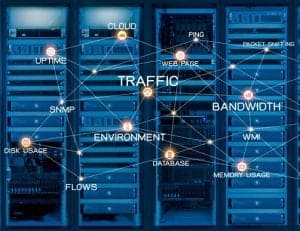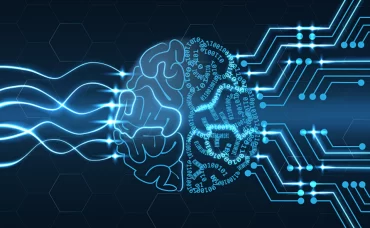
Monitoring and observability collect information and provide visibility into what’s happening. Observability, however, ensures a rapid, accurate response where manual methods may delay a fix.
Companies desperately need accurate monitoring solutions with a bird’s eye view of all applications, tools, and data storage spaces. Monitoring helps them stay on top of any potential issues that could lead to downtime, security breaches, or reduced efficiency. However, companies must also pursue observability just as fully as monitoring for complete control of all technology. Let’s explore why.
Observability shares characteristics with monitoring on a high level. Monitoring crawls applications for signs of breaches, breaks, and other challenges. The software pings the appropriate person or department to alert them that something needs to be fixed.

Observability also looks for problems. They both support the overall technology health of the organization. Both improve performance and reliability and allow key members of the organization to watch for problems without the time-consuming action of manual monitoring.
Monitoring and observability draw on multiple data sources to ensure that operations run smoothly. They collect information about all involved data environments and provide visibility into what’s happening.
Observability, however, takes the process to the next level in one fundamental way. Without this step, companies can remain at a disadvantage during red flag alerts.
Observability offers an understanding of the event
With monitoring, alerts tell organizations that something is wrong but don’t always offer a deep understanding of why the problem exists. When companies rely solely on monitoring, they may not be able to fix issues for the long term or understand why a problem continues to happen. They may never reach a proactive stage.
When the problem is a simple one, monitoring helps provide a layer of assurance that everything will continue to run. However, not all problems are easily solved with just a click. With observability measures in place, the software does the heavy lifting, pulling in any possible data sources to uncover the root cause of the problem and provide a clear pathway to fix it.
Monitoring and observability may have two different goals, but they are inextricably linked. Not all problems identified by monitoring will require a sophisticated fix, but the ones that do are covered. Observability ensures a rapid, accurate response where manual methods may delay a fix. Even better, some systems may offer suggestions for resolutions when observability information is particularly complex.
See Also: Continuous Intelligence Insights
Observability isn’t new, but the principles are needed now
With endlessly complex cloud-native environments, the ability to observe multiple data sources and really understand what’s behind an issue offers a valuable service to companies. Manual monitoring is prohibitively difficult when operations run on a series of micro-services, containers, and scale-out infrastructure. The chances of missing something are high, and the opportunity to respond quickly is a nearly impossible task.
Observability also helps tie DevOps to business goals more closely than simple monitoring. Alerts may go to IT where something “working” may mean just a frictionless operation. In reality, that working software causes problems for specific business goals or impedes sprints for a department. Observability ensures a higher level of visibility into the way the entire system supports greater business operations. Teams can see which technical problems impact business goals and adjust accordingly.

Modern DevOps needs monitoring and observability. Period.
A modern DevOps approach integrates both monitoring and observability into its operations. Without both, teams miss strategic opportunities to refine technology stacks and build critical environments. They tie up IT with hopelessly complex manual monitoring and ensure a slow response to challenges.
Instead of that, DevOps can optimize the end-user experience through continual intelligence that leverages both observability and monitoring. The result is a powerful combination of alerts and fixes that integrates all available data for efficient resolutions. It’s a critical piece of bringing DevOps to a new level and ensures technology fits business goals and not the other way around.






